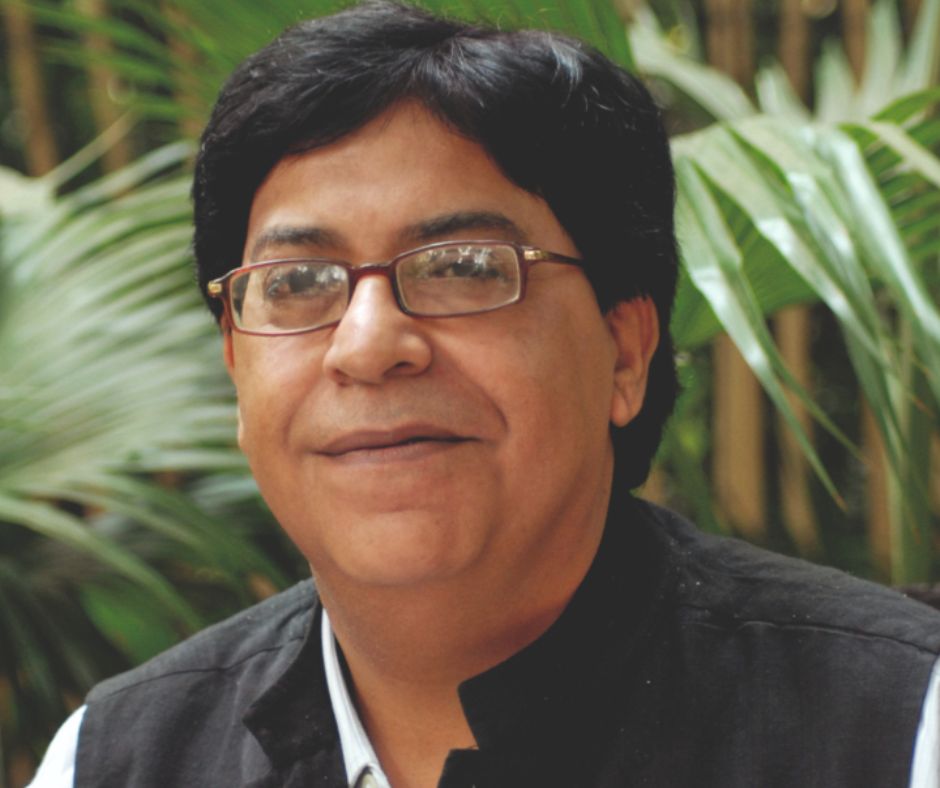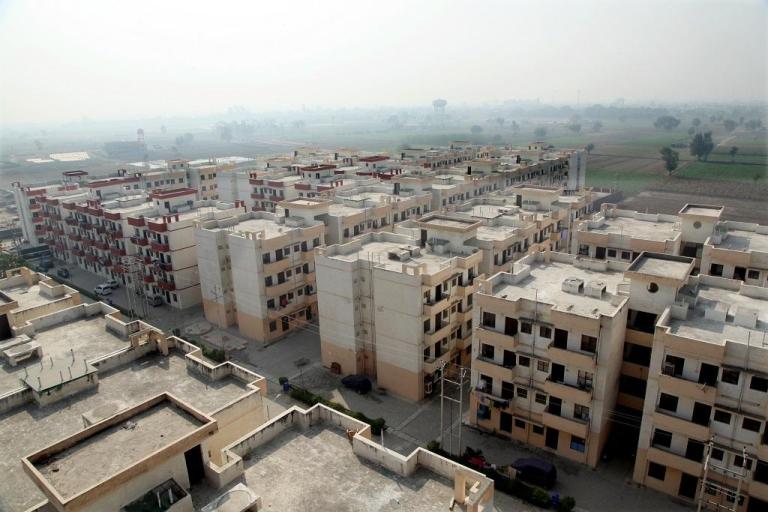“The world hates change, yet it is the only thing that has brought progress.”
– Charles Kettering
In the last two decades, the world has witnessed rapid changes, both in terms of the needs of society and technology. Also, it would be right to say that the profession is in the limelight now, as made apparent from the soaring number of Architecture Institutes in India. With the change in demands of society, and development in the technology inside and outside the Architects’ offices, is it time that even our Architectural Education see some necessary changes? Pedagogy, curriculum, structure and anything else…that you think must change about Architectural Education in India…

Through this post, we would like to invite your views and comments on the following question:
If you were allowed to change three things about Architectural Education in India, what would they be?
The question is open to receiving comments from professionals, educators and students. We request you to please post your comments below as a reply to this post. Selected comments would be published and shared with institutes, architects and students.







13 Responses
1. Divide architectural education into three streams – professional architecture degree (B.Arch with license to practice), Bachelor’s degree in Architectural Engineering (differs from Civil Engg – purely related to built living environments; no large scale public infrastructure etc.) and non-professional Bachelor’s degree in architectural studies (for those who don’t intend to practice). Our present one-glove-fits-all education create mediocre architects, few educators and rarely, any game changers.
2. Make work-study mandatory for a minimum of two semesters at least – program it into the syllabus. Ensure that all part-time internships are paid appropriately.
3. Bring in the concept of a printed-out syllabus complete with weekly study material and assignment list for the entire semester that is made available for the students at the beginning of each semester (for each course they take). Letting students know what is expected of them at the beginning of the semester helps them estimate and tackle their time and academia responsibly.
You are right Deepthi Murali. It is time Architectural Engineering is recognized. There is no doubt that Architecture in reality has grown into a branch of the engineering discipline, a robust and manly profession at that (pardon me for the gender-ed adjective) and not the mother of all arts as it is continued to be forced down the student’s minds…
Harimohan, I beg to differ. Engineering still remains to be small part of Architecture. In fact, Architect needs to know everything about engineering that relates to building. I still believe in what Gropius once said (I quote)..’Architecture begins where Engineering ends..’) As far as Art is concerned, any piece of high engineering is referred to ‘State of Art’. One expects Architect to always deliver such ‘State of Art’ product through his design. All civil engineers who innovate and contribute to body of knowledge of Civil Engineering are also Architects (If not as per definition of Architect in the Act!) in reality. But they are very few in number as they are not trained to be like that, they are born to be like that. In Architecture, we are expected to train our students to learn many different skill sets including civil/ architectural Engineering.
It is true that unfortunately most of our schools fail to train their students adequately in construction and engineering. Many schools have construction teachers who have never had their designs actually built or do not have enough exposure to site. We need to find solution to this major issue.
I feel the changes that ought to happen are already happening at a slow and steady space. Also due to the amount of exposure available, there is very little dependence on Architectural Colleges by the Architectural students which I somehow feel is making them more independent and creative in their own way to learn by experience rather than classroom taught education. Nice initiative to raise this topic, 3 changes I wish for :
01. Reduce the course duration to 4, 3 in college 1 in internship, anyways most of learning is in the industry, earlier the better.
02. If not 3 Architectural courses, let there be a lot more carefully crafted electives and not make students study each and everything that exists on planet earth.
03. More focus should be on PRESENTING works in a professional manner like powerpoints and computer generated models, rather than printed sheets and hand made models being thrown out of 3rd floor studio windows.
As a STUDENT, I am one of the best examples for the above said “rapid change -more than 80% poor quality architectural education in India”. I don’t know when I will survive from this misery.
To begin with asking my apology as I going to sever the rules/limits did by the questioner (ie. If you were allowed to change “three things” about Architectural Education in India, what would they be?.) As a starter I don’t know how to solve the problems. But I am aware about the PROBLEMS FACING ARCHITECTURAL EDUCATION/PROFESSION and it believes the solutions lying in these questions. I would like to share my thoughts (questions) with u people.
1) So many of us (including the masters from the worldwide) presenting designs in name sake of FUTURE. But I am asking, how long our sweet HOME (earth) will go? Is it will complete 2100? Or explode before that?
2) Do we really need to follow the bad things/designs did by the western countries in the past decades in our own cities/country? (like migration from developed countries to developing countries)
3) A lot of ………………Architects/Associates/Building consortiums don’t care about the basics thoughts (I don’t care attitude). Then why students want to study SOCIOLOGY? ENVIRONMENTAL STUDIES? PROFESSIONAL PRACTICE? Etc.
4) How many of architectural institutions in India teaching well than as a business?(in % form)
5) How many of architectural offices in India practicing Good architecture than it as a business? (in % figure).
Concluding, Please pray for GOD for never falling our invoke hell upon you people (for those behind the stage lead to these citations for any purpose- egotism).
As a student I am not supporting your first view. Because when we come to architectural education, we don’t aware about the branches in architecture/knowledge. The one and only thing I lost in my college life was ‘identification of area of interest’ .Like a signage board/Information kiosk on railway station/airport to direct the travelers, that attitude we minimum expect from the academicians. When we go through our masters all of them were different in their thoughts, all of them were important for the humanity. Like that all of students in a classroom have their own different abilities and all of them were important. All the branches are there in our 5 year b.arch course. And that’s the duty of a good educational institution/Academician/staffs to ‘identify student’s interests and direct them to correct destination(other than earning money monthly/yearly) from Sem5 to thesis. Selection of internship office(7th sem) /electives/dissertation/thesis all depends on area of interest on the large apple tree named ‘Architecture’ having so many branches and fruits.
In my opine, three things will help the students to practice better, 1. if we are not allowed to practice out side india with this degree, then cutting off all the building techniques study which are not applicable. 2. Introducing buisness management study, with entrepreneurship.3. more focus and importance of indian various bye laws and various clearances should be taught, no college lets u know about all the actual number of departments and procedures involved…
(1)First and the foremost…We must declare that it is a professional course meant for professional students..taught by professionals in the interest of the profession in general and society in particular..which is not happening now…
(2) Sketching and freehand design must be on priority to computer aided design / drafting. We need more designers who understand design logic and less draftsman . Computer must be a drafting tool rather than designing tool because it does not understand human emotions..behavior and needs..It may, tomorrow but as of now computer has limitations..
(3) Student of Architecture must be jack of all and master of at least one as per his / her interest.
Ar. Ravi Sant
1. MAKE IT HANDS-ON, PRACTICAL APPROACH WOULD HELP.
2. THE TEACHERS SHOULD ALSO BE PRACTISING ARCHITECTS.
3. THE COUNCIL OF ARCHITECTURE SHOULD STOP GIVING LICENSES TO COLLEGES WITH NO INFRASTRUCTURE OR TEACHERS. ITS RAINING ARCHITECTURE COLLEGES NOW AS YOU CAN SEE IT FROM THE PAST 3-4 YEARS. ALSO THE INTAKE SHOULD NOT BE INCREASED BEYOND 40. WE ARE ACTUALLY PRODUCING BAD ARCHITECTS & BLAMING THAT THE STUDENTS THESE DAYS ARE BAD AND DONT WANT TO WORK. THE STUDENTS ARE THE SAME.. THE TEACHERS HAVE TO MAKE THEM WORK.
http://arch-student.com/ | World architecture students community
I obtained the requisite qualifications in the subject of Architecture for registration as an Architect by appearing as an external student and successfully passing, the Diploma Examination in Architecture, conducted by the Director of Higher Arts Examinations of Government of Maharashtra, in1970. I consider myself to be lucky and now thank God for restraining me from joining any college of Architecture to learn the subject of Architecture. The circumstances then obtaining forced me to remain away from the Professors of Architecture!!!
During the thirty-seven years of my practice as an independent professional, I had many opportunities to meet and discuss with ’eminent’ architects and Professors about the subject of architecture and the method they adopted in in the practice. I realized that these are the culprits who have formed and spread the false image of the subject of architecture and the architectural profession in the general public and especially among the students of Architecture in the last four decades.
I first referred to the 1903 edition of The Concise English Dictionary by Charles Annandale, M.A. L.L.D.
It described the word “architecture” as ‘art and science of building’. Here the word ‘building’ is used as gerand, [as an example “reading is a good habit”]. I also referred to Sankrut and Marathi literature. In old Indian texts, we find the mention of a process of formation or ‘creation’ of a “word” or “pronouncing a word”. It is said to contain four stages; namely, Paraa, meaning a haze like state or a sky like state of void where thoughts move in a cloud-like form, Pashyanti, meaning the stage where one perceives firming-up of thoughts about some word, or shapes in architecture, Madhyamaa, where one chooses the medium, the language in literature or like a building material in architecture; and with the choice of medium the relevant technology enters the process, and finally it enters the stage of Waikhari, the set of instructions to the muscles of the lungs, the throat, the tongue, the cheeks, the jaw and the lips is finalized and then the entire group of muscles is ordered to work in unison to produce or to pronounce the ‘word/s’ or say to form a shape by using some building material in architecture.
A similar process precedes the coming into existence of any three dimensional object, whether of ‘art’ or of ‘utility’; and this is the domain of the subject of Architecture, wherein the ‘engineering’ comes into play the physical part of the application of the technology in the execution of the construction activities as per the decisions of an architect, who is entrusted with the task of designing of the shape of the object of utility for performing specified functions as desired by his client.
All the present day architects needs to understand that the main subject for expression in three dimension is ‘architecture’ which pertains to design and planning of any object of utility; and ‘engineering’ is a technical sub-subject dealing with that part of construction work in “civil” and “military” architecture, where machines are generally used for execution of erection work. When a senior architect recommends learning of “the skill
in Architectural Engineering” I feel pity for him and for his students!!!